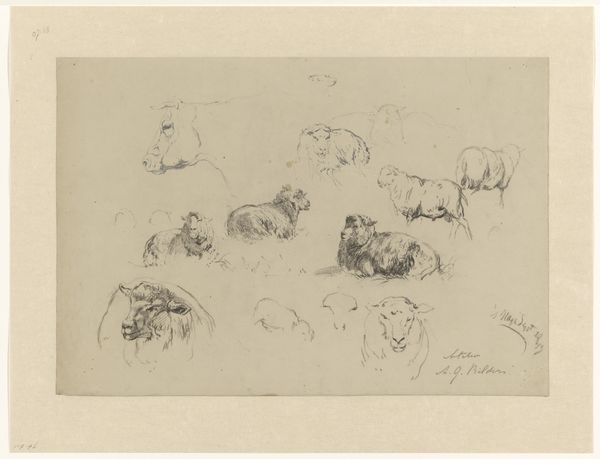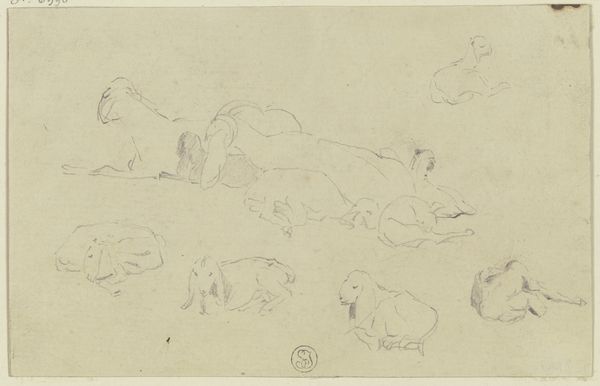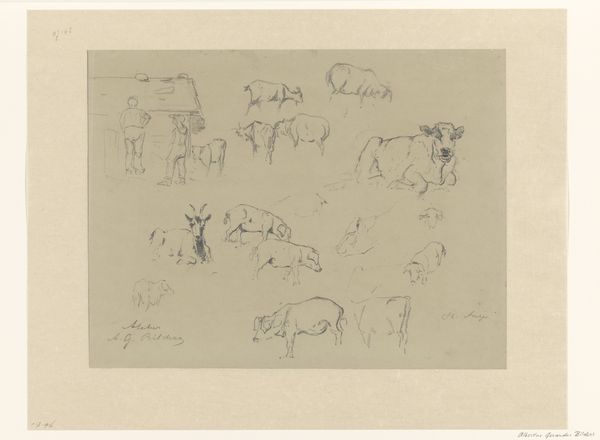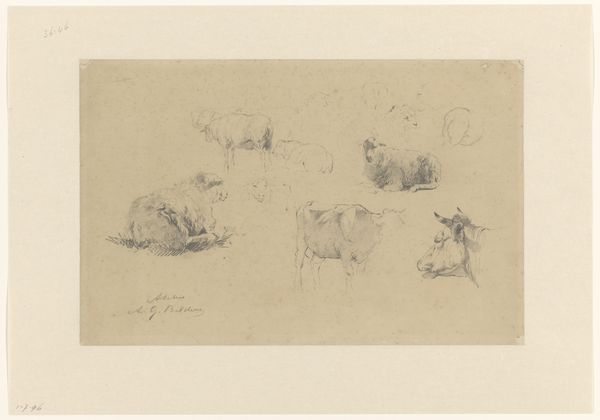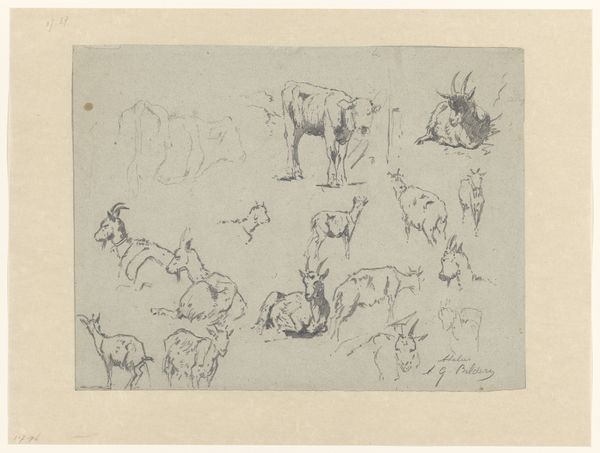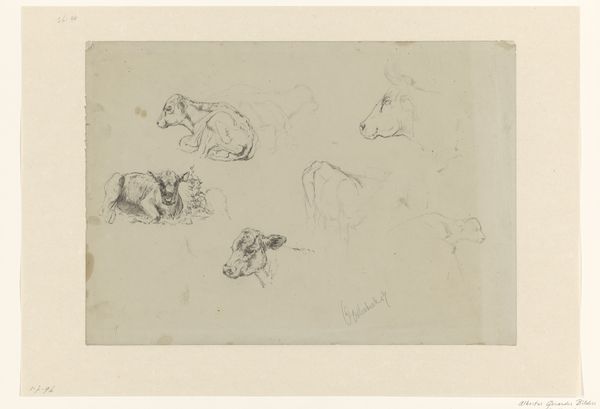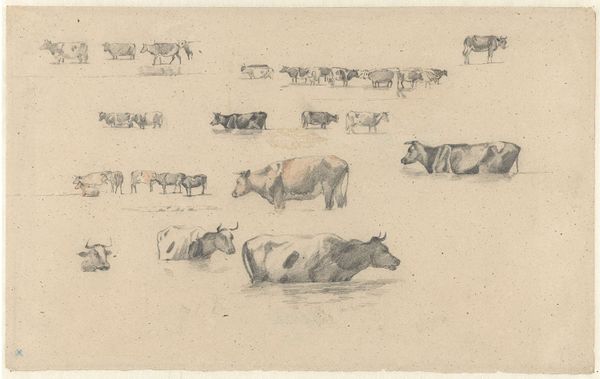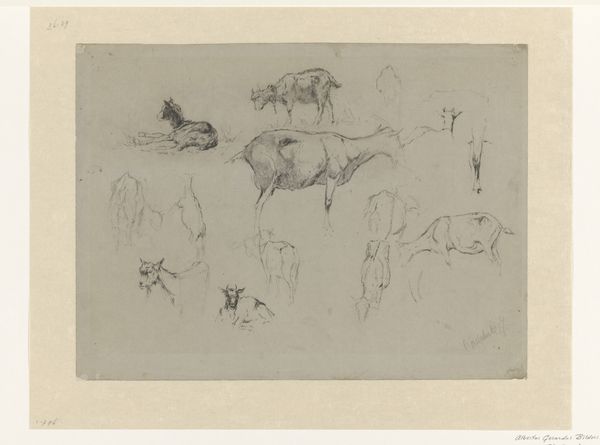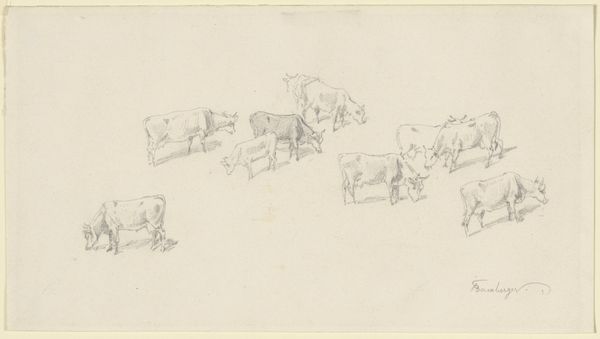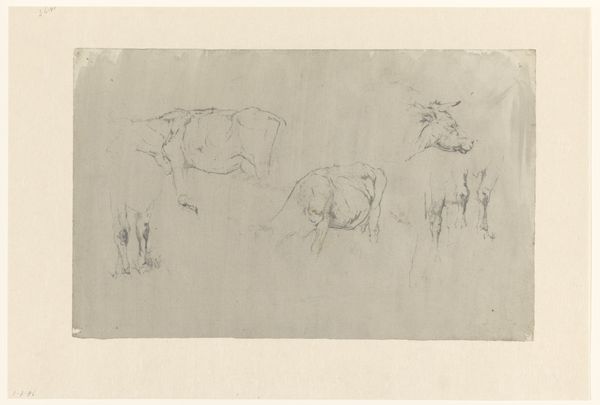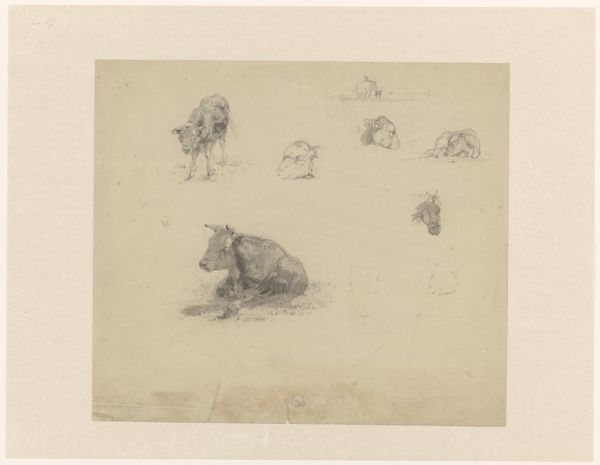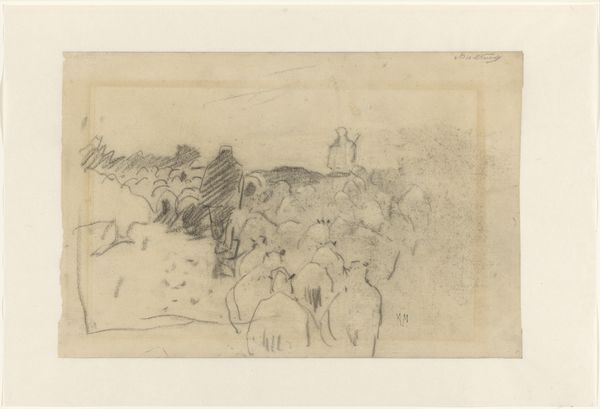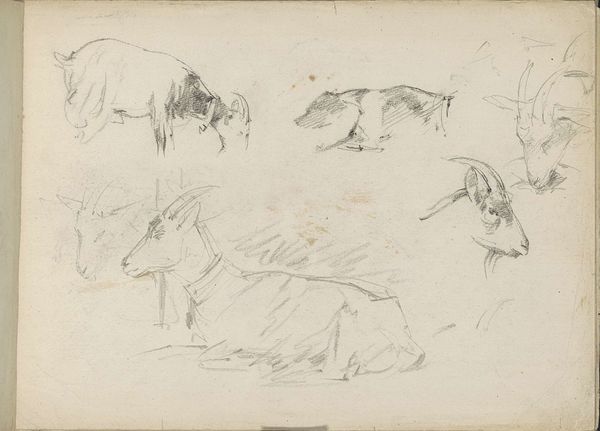
drawing, paper, pencil, graphite
#
drawing
#
light pencil work
#
animal
#
landscape
#
paper
#
pencil
#
graphite
#
sketchbook drawing
#
genre-painting
#
realism
Dimensions: height 424 mm, width 286 mm
Copyright: Rijks Museum: Open Domain
Editor: Here we have Gerard Bilders' "Schetsblad met studies van koeien en twee geiten," a graphite and pencil drawing on paper, dating from 1848 to 1865. The light pencil work creates a dreamy, almost ethereal quality. What do you see in this piece, especially concerning its historical context? Curator: Beyond the idyllic pastoral scene, I see Bilders grappling with emerging artistic and social tensions. During this period, industrialization threatened traditional rural life. Note how Bilders, rather than idealizing the countryside, meticulously sketches these animals, grounding them in a palpable reality. Editor: So, is it a form of quiet resistance, capturing a disappearing way of life? Curator: Precisely. Consider the rise of Realism in art – a deliberate turn away from Romantic fantasies towards depicting the everyday struggles of ordinary people and, in this case, animals that sustained them. How does Bilders' choice of humble subjects – cows and goats – challenge the dominant artistic narratives of the time, which often centered on heroic figures or grand historical events? Editor: That makes me think about class too. He's choosing not to depict something noble. Curator: Absolutely. It also speaks to land and labor. Who owns these animals? Whose labor benefits from them? These sketches, in their unassuming way, touch on fundamental questions of ownership and value in a changing society. What does focusing on these working animals, rather than idealized landscapes, mean to you? Editor: I see now it is a subtle commentary, giving value and visibility to the animals working in the landscape. Thanks, that really changes how I see it. Curator: My pleasure. By understanding the broader socio-political context, we can unlock richer interpretations of seemingly simple artworks.
Comments
No comments
Be the first to comment and join the conversation on the ultimate creative platform.
